On Cloud Nine in Denver
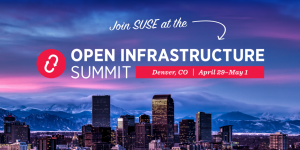 Next week, members of the open source community will descend upon Denver in hordes unseen since the gold rush that resulted in the city being formed back in the late 1800’s (probably). That’s right, it’s the very first Open Infrastructure Summit – bringing together some of the finest minds across the open source community to discuss, demo and deliberate all things OpenStack, Kubernetes, ONAP, Kata Containers, Airship, Zuul, and much, much more.
Next week, members of the open source community will descend upon Denver in hordes unseen since the gold rush that resulted in the city being formed back in the late 1800’s (probably). That’s right, it’s the very first Open Infrastructure Summit – bringing together some of the finest minds across the open source community to discuss, demo and deliberate all things OpenStack, Kubernetes, ONAP, Kata Containers, Airship, Zuul, and much, much more.
We’re particularly excited about this summit as we’ll be unveiling SUSE OpenStack Cloud 9 to the world there, having pre-announced it earlier in the month at SUSECON in Nashville. As the first company to produce an enterprise-ready OpenStack distribution back in 2012, we continue to work to make OpenStack easier for companies to implement in an enterprise environment, giving a stable, production-ready base for business-critical systems and applications to run on.
Keep it up
SUSE OpenStack Cloud 9 is based on the OpenStack Rocky release, so in keeping with my previous theme of songs from the Rocky movies, I thought I’d (unapologetically) throw one more in for good measure. One of the most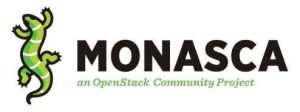 important things in any enterprise IT infrastructure is monitoring – you need to ensure that you maintain uptime. One of the most essential tools in an enterprise toolkit is monitoring – if you don’t know what’s going on in your infrastructure, how can you keep it up?
important things in any enterprise IT infrastructure is monitoring – you need to ensure that you maintain uptime. One of the most essential tools in an enterprise toolkit is monitoring – if you don’t know what’s going on in your infrastructure, how can you keep it up?
The OpenStack project for monitoring is codenamed Monasca, which first appeared in the OpenStack Mitaka release back in 2016. In SUSE OpenStack Cloud 9, we’re now including SUSE OpenStack Cloud Monitoring as part of the SUSE OpenStack Cloud subscription.
Learn to (make your infrastructure) fly
As well as the networking opportunities at the Open Infrastructure Summit, one of the biggest benefits about attendance is the learning opportunities open to all. Many learned members of the community will be sharing their best practices, giving advice on how to get the most out of your infrastructure and helping you learn to fly (or at least learn to make your infrastructure fly). There are some great sessions lined up, including a number on Monasca.
On Tuesday 30th April, Sumit Jamgade, Witek Bedyk and Joseph Davis will be talking about how scaling should be easy and automatic through the use of Heat and Monasca. It’s an early session, starting at 9am, so make sure that you don’t overindulge at the Marketplace Mixer on the Monday night. That might be quite difficult, especially as the SUSE booth will have some local beers on draft available for you to enjoy (in moderation, of course).
If you’re keen to get involved in the Monasca project, then there are multiple opportunities for you. You could join Witek Bedyk at 10:50am on Tuesday for a Project Update, or at 2:30pm for Project Onboarding.
 Leaving on a jet plane?
Leaving on a jet plane?
If you’re leaving on a jet plane to come to Denver (or driving, taking a train, roller blading, travelling by Segway or even hitching), then make sure you come over to the SUSE booth (A3, in easy staggering distance from the coffee lounge) and say hi. Come and talk to one of the SUSE staff about how we can take the stress out of open infrastructure and give you more time to focus on adding strategic value to your business as opposed to just keeping the lights on. You could also pick up one of our new, limited edition stickers to adorn your chosen flat surface, or even a stuffed chameleon for your desk/child/pet (note: desk, child and pet not included).


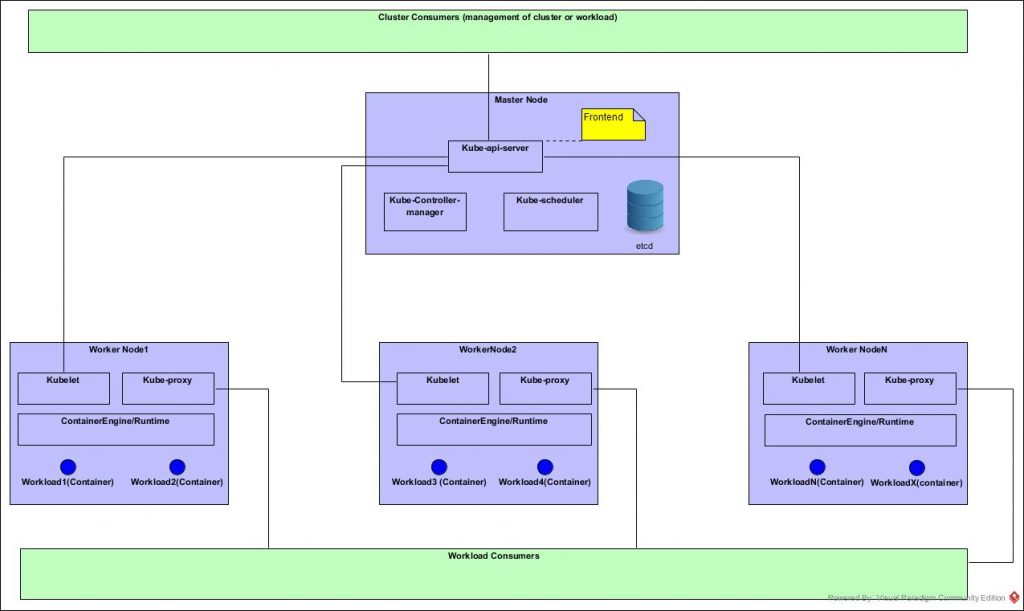
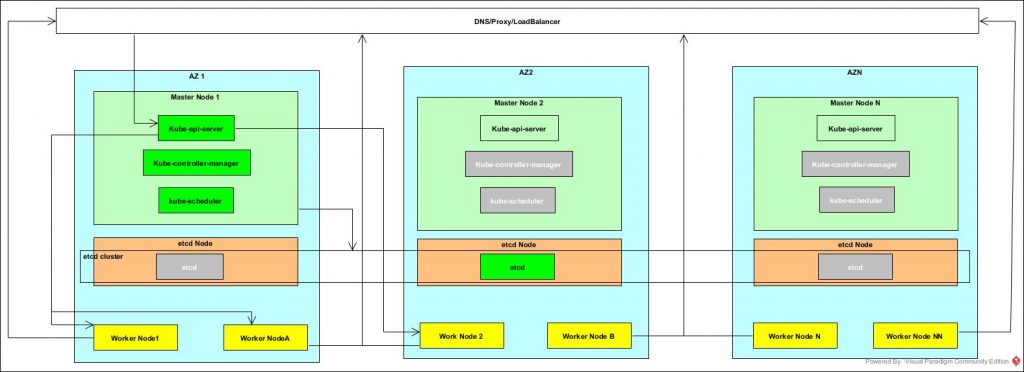

 Popular topics:
Popular topics: Take advantage of one-on-one time with SUSE experts and subject matter experts to share your needs and learn how we can help.
Take advantage of one-on-one time with SUSE experts and subject matter experts to share your needs and learn how we can help.
 He then provided a quick overview of the week, SUSECON key points, shouted out our sponsors (BIG THANKS!!!) and then welcomed SUSE CEO Nils Brauckmann on stage where he delivered a business review. A few key take-a-ways:
He then provided a quick overview of the week, SUSECON key points, shouted out our sponsors (BIG THANKS!!!) and then welcomed SUSE CEO Nils Brauckmann on stage where he delivered a business review. A few key take-a-ways:
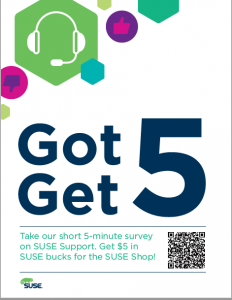 Have you been coveting your very own SUSE chameleon? How about a pair of SUSE socks? Or maybe it’s a notebook that you want to take home? The options to turn your office green are endless. And to jumpstart your journey, the Support team wants to give you $5!
Have you been coveting your very own SUSE chameleon? How about a pair of SUSE socks? Or maybe it’s a notebook that you want to take home? The options to turn your office green are endless. And to jumpstart your journey, the Support team wants to give you $5!
